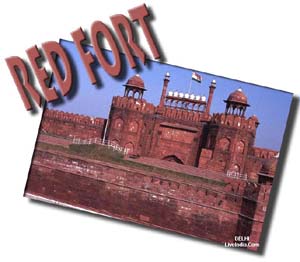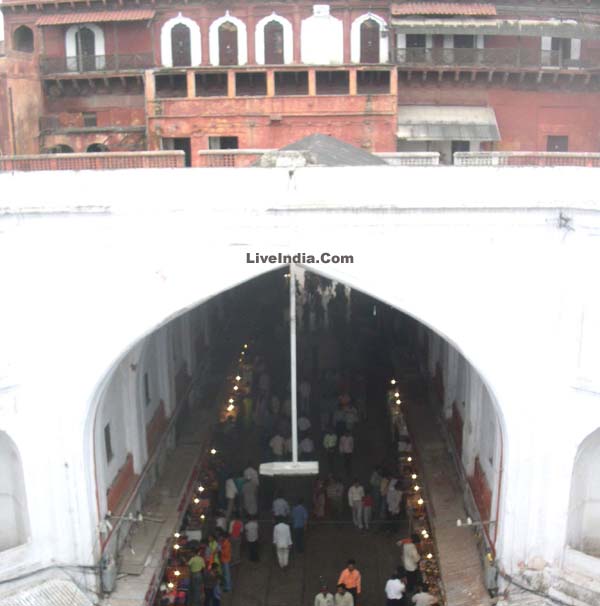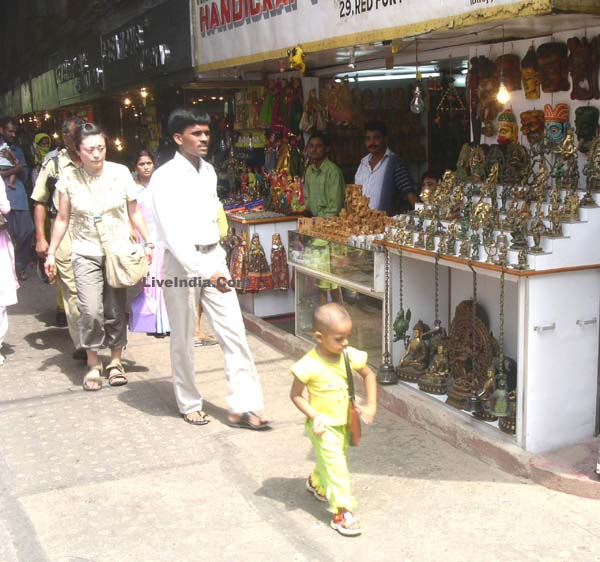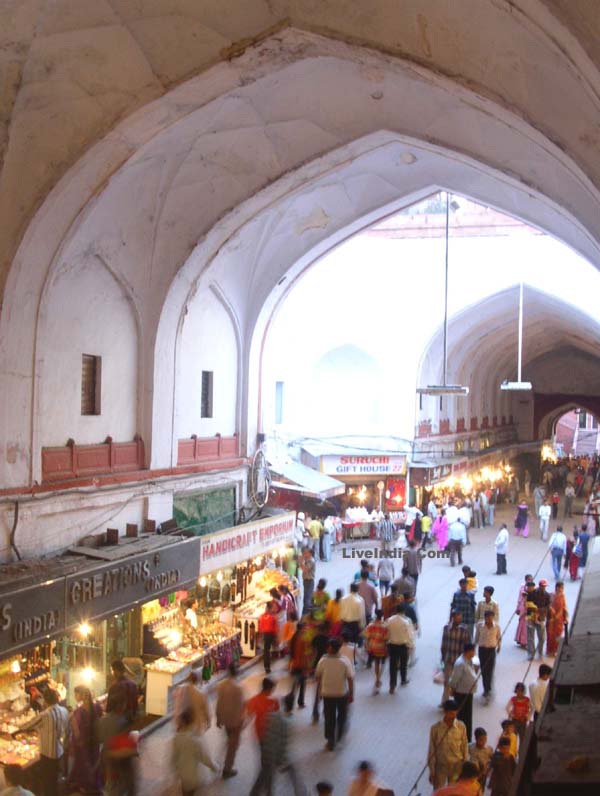 |

Old Delhi and New Delhi |

click for Other Tourist Place |
 |

Old Delhi and New Delhi |

click for Other Tourist Place |
|
|
|
|
|
|
 |
The linearity of this market has formulated a strong longitudinal link and emphasized the straight axis with the Naubat-Khana & Diwan-i-Am. Walking through the Lahori-Gate one immediately enters this covered two storied arcade, with octagonal court in the middle for sunlight & natural ventilation, known as 'Chhattar Manzil' which divided the market into two sections, eastern and western, which have vaulted roofs supported on series of broad arches given at regular interval. Their edges, supported by stone and the intermediary space ( i.e. a vault) bears stalactite (honey comb motifs) in stucco, which has been universally used in Islamic art, structurally as well as ornamentally. As it appears, the whole of the market, in the interior and on the exterior, was originally stuccoed, painted and gilded to give a gorgeous effect. Bazaar on each side contained 32 arched bays that served as shops, just as they do today. The lower cell consisted of two rooms, the front one was possibly used for the actual display and the one at the back for storage, manufacture or business transaction. The upper cells may perhaps have been used for the official transactions related to the commercial function. 300 yrs ago this bazaar catered to the luxury trade of the imperial household, specialized in exquisite carpets, rugs, jajams and shatranjis; takia-namads and quilts; shahtus and pashmina shawls; costumes; velvet pardahs and chiks; embroideries with zari and brocades; and a wide variety silks, woolens, velvets and taffetas which the Mughals used in their daily life; precious stones, exotic jewelry and indigenous ornaments; gold and silver utensils, fine wood and ivory work; brass and copper wares; fine arms and armaments; coloured ganjifas and indoor games; jafran (saffron), kasturi (musk) and other spices; and innumerous other stuff which could not be had even in the adjoining Chandani Chowk market, and it was privilege of the king that this rare and precious things were available only in the 'Fort market' for their exclusive choice. The Chhatta Bazaar still
bubbles with life, but with fewer jewelry shops and more light-hearted
Indian handicrafts shops today. Few of them come under the biggest export
houses in India. The prizes here are quite reasonable and affordable. The
Chhatta Bazaar is in the process of its revival to get its original glory
back after alterations done during the last two centuries.
|
||||

As you enter the Lahore Gate, arcaded apartments flank the passage, which is known as Chatta Chowk. Also known as Meena Bazaar, this was one of the first covered bazaars of the 17th century. |
||||

The shops of that era sold pure silks, jewellery, gems, silver ware and other artistic objects and catered primarily to Mughal courtiers and noble families. It is said that there were also teashops here, where nobles used to meet and discuss the latest court gossip and news of the kingdom. Today the shops in the Chowk sell souvenirs and eatables and drinks. They are now located only in the lower arcade whereas in Mughal times the shops were located on the upper as well as lower arcades. |
||||

These vaulted arcades are made up of natural sandstone. The shops in the lower arcade had cusped arches. In the middle of the Chatta Chowk, there is also an open section for the sunlight and fresh air to enter. From the end of the bazaar, the view of Drum House was picturesque as the large square courtyard and water tank, provided a clear view, unlike later when much was altered with the British occupation. They destroyed the elegance of the monument by building multi-storey barracks north of the courtyard |
||||
.jpg) |
|
|
|
|
|
 |
 |
|
 |
|
LiveIndia.Com Copyright
© 1998-2001 Live India Internet Services! All rights reserved
|
Complete web site on Red Fort Delhi with large Gallery, Introduction, History and tourist information